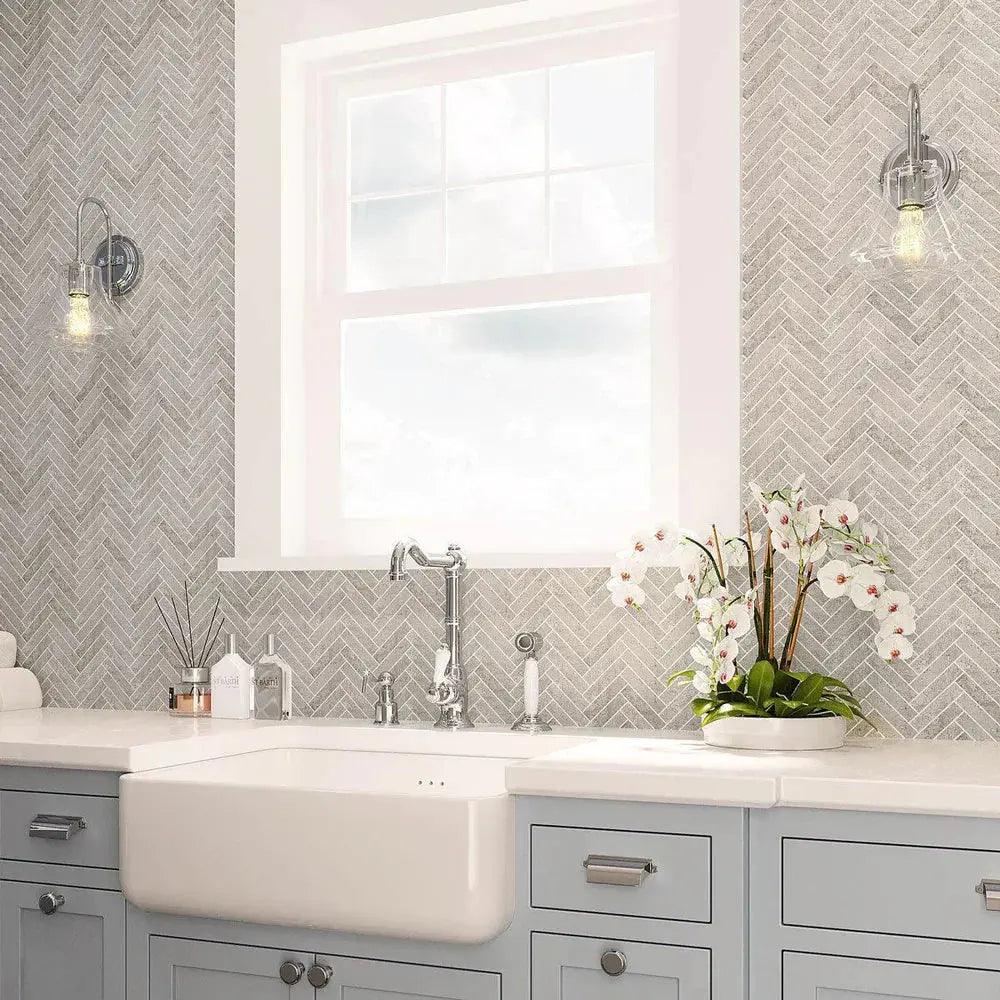The Allure of Herringbone Stone Mosaics
by Shivam Tayal 18 Feb 2025 0 Comments
Introduction Of Herringbone Stone Mosaic
- Herringbone stone mosaics have intricate design element which combines the natural elegance of stone with the beauty of the herringbone pattern.
- It is known for its signature zigzag layout that has been in use for centuries and still is a popular choice in both modern and rustic designs.
- When stone is converted into mosaics, it adds a new layer of depth, texture and visual appeal thus, they have a lot of popularity among designers and homeowners.
- This type of mosaic can complement various settings, from kitchens and bathrooms to living rooms and outdoor areas.
- This type of design is available in many types of materials like travertine, slate, and limestone, which helps the mosaic to adapt to different settings like modern minimalism to traditional and rusty.
- The natural patterns of stones, when combined with the intricate shapes of the mosaic, create an interplay of texture and tone, which helps to transform any surface into a point of attraction.
- Herringbone mosaics offer a balanced mix of aesthetic appeal and practical functionality thus they can be used anywhere whether it is the backsplash, flooring or feature walls.
History of Herringbone Stone Mosaics
- The herringbone pattern got its name from the herringfish as it resembles its bone.
- The herringbone pattern has a very vibrant history as it originated in ancient Roman civilisations, it was mainly used for road construction as the interlocking pattern of laying bricks could withstand heavy traffic and increase its strength and durability.
- With time, the use case of herringbone patterns changed from utilitarian applications to decorative ones.
- Herringbone started to become a benchmark for European design in the Renaissance era.
- Then, people started to use this design in wooden flooring, textiles, and ceramics, where with the help of this pattern, we could add a layer of sophistication to the interiors.
- After that, herringbone design started being used in stone mosaics which added a whole new layer of luxury and sophistication to this pattern.
- This pattern was able to highlight the stone veins, texture and natural variation
- Today, herringbone stone mosaics are a modern reinterpretation of this historic pattern, combining traditional craftsmanship with contemporary styles.
Applications of Herringbone Stone Mosaics
- Kitchens and Backsplashes: The intricate zigzag pattern of herringbone mosaics instantly becomes a focal point, adding texture and depth behind countertops and stoves. Their visual appeal turns even the simplest kitchen designs into refined statements.
- Bathroom Walls and Floors: Whether as a shower surround or flooring, herringbone mosaics introduce an upscale spa-like ambience. Their distinctive layout highlights the stone’s natural veining, bringing both luxury and practicality to moisture-prone areas.
- Living Rooms and Hallways: Used as an accent wall or a continuous flooring option, these mosaics help define and elevate open-plan living areas. The pattern adds visual interest and guides the eye through the space.
- Fireplace Surrounds: Herringbone mosaic tiles around a fireplace create a striking, contemporary-meets-classic look. The angled stones emphasize the natural grain and provide a warm, inviting atmosphere.
- Outdoor Patios and Pathways (With Proper Sealing): For exterior settings, herringbone stone mosaics add a timeless touch to patios, walkways, or poolside areas. Their interlocking pattern offers stability and visual flair that complements a variety of landscaping styles.
- Commercial Spaces: From upscale boutiques to stylish hotel lobbies, herringbone mosaics make a refined statement. They endure heavy foot traffic while maintaining their distinctive, sophisticated appearance.
Installation of Herringbone Stone Mosaic
- Proper installation of Herringbone Mosaic is important for longevity and functionality as it requires precision, expertise and attention to detail
- The first step is site preparation, in which ground is carefully levelled and excavated to create a strong base
- After the stone placement, a high-quality adhesive and mortar mix was applied to secure them into their position
- Then mosaic tiles, which are usually pre-arranged on the mesh, are carefully pressed into place with proper attention given to maintaining consistent spacing and alignment between sheets.
- After that, the space between these sheets is filled with non-staining grout, which acts as a seal to protect from water and also enhances the visual appeal of the area.
- A sealant is applied for outdoor installations to protect the stones from stains, moisture infiltration, and environmental damage, ensuring long-term durability.
Maintenance and Care of Herringbone Stone Mosaic
It is very important to properly maintain these marbles to preserve their natural beauty and durability.
- This can be done by regular cleaning of the stone with the ph-neutral stone cleaner and a soft cloth, which would remove dirt and debris without damaging the surface.
- Harsh chemicals should be avoided as they can damage the surface of the stone.
- Outdoor installations may require occasional pressure washing to remove dirt and maintain the mosaic’s fresh appearance.




